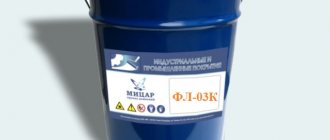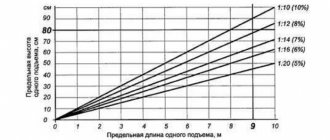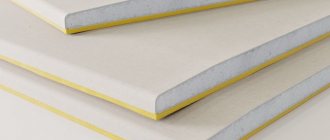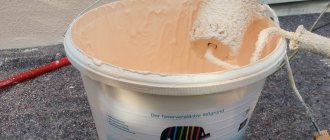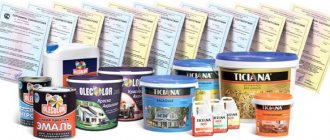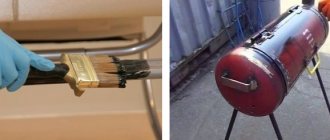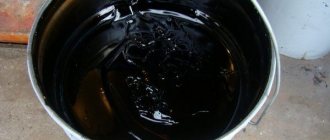Preface
The goals, basic principles and basic procedure for carrying out work on interstate standardization are established by GOST 1.0-92 “Interstate standardization system. Basic provisions" and GOST 1.2-2009 "Interstate standardization system. Standards
interstate, rules and recommendations for interstate standardization. Rules for development, adoption, application, updating and cancellation"
Standard information
1 DEVELOPED by the Federal State Unitary Enterprise "Russian Road Research Institute" of the Ministry of Transport of the Russian Federation (FSUE "ROSDORNII")
2 INTRODUCED by the Interstate Technical Committee for Standardization MTK 418 “Road Facilities”
3 ADOPTED by the Interstate Council for Standardization, Metrology and Certification (protocol dated June 25, 2014 No. 45)
The following voted for adoption:
| Short name of the country according to MK (ISO 3166) 004—97 | Country code according to MK (ISO 3166) 004—97 | Abbreviated name of the national standardization body |
| Armenia | A.M. | Ministry of Economy of the Republic of Armenia |
| Belarus | BY | State Standard of the Republic of Belarus |
| Kyrgyzstan | KG | Kyrgyzstandard |
| Russia | RU | Rosstandart |
4 By Order of the Federal Agency for Technical Regulation and Metrology dated February 27, 2015 No. 111-st, the interstate standard GOST 32870-2014 was put into effect as a national standard of the Russian Federation on July 1, 2015.
5 INTRODUCED FOR THE FIRST TIME
Information about changes to this standard is published in the annual information index “National Standards” (as of January 1 of the current year), and the text of changes and amendments is published in the monthly information index “National Standards”. In case of revision (replacement) or cancellation of this standard, the corresponding notice will be published in the monthly information index “National Standards”. Relevant information, notifications and texts are also posted in the public information system - on the official website of the Federal Agency for Technical Regulation and Metrology on the Internet
© Standardinform, 2015
In the Russian Federation, this standard cannot be fully or partially reproduced, replicated and distributed as an official publication without permission from the Federal Agency for Technical Regulation and Metrology
GOST 32870-2014
13.2.2 Instructions for the use of mastics of the MBGR, MBGPg MBPG, MBPPG brands
13.2.2.1 Mastics MBGR, MBGPg MBPG, MBPPG are used in dry weather at an outside air temperature of at least 10 °C.
13.2.2.2 The surface on which the mastic is applied must be dry and clean.
13.2.2.3 The mastic must be heated to the operating temperature specified by the manufacturer.
13.2.2.4 Heating mastics of the MBGPg, MBPPG brands above 175 °C is prohibited.
13.2.3 Instructions for the use of mastics of the MBGPKh, MBGP0, MBBPKh, MBPPKh brands
13.2.3.1 Two-component mastics of the MBGPC, MBGP0, MBPPKh brands are mixed in the ratio specified by the recipe at the point of consumption at a temperature not lower than 15 ° C until a homogeneous mass is obtained. If mastic components are stored at temperatures below 15 °C, they must be kept for at least 20 hours in a room with a temperature of 18 °C to 30 °C. One-component MBGPC mastics are thoroughly mixed before use.
13.2.3.2 Application of mastic should be carried out at an ambient temperature of at least 5 °C and in the absence of precipitation. For mastics of the MBGPC, MBPPKh brands, depending on the ambient temperature, the operating temperature should be from 5 °C to 30 °C.
13.2.3.3 After mixing the components, it is recommended to use mastic of the MBGPC, MBPPKh brand within 72 hours, since after this time the mastic may become non-fluid.
13.2.3.4 Mixing components, as well as applying mastics of the MBGP0 brand should be carried out using small-scale mechanization.
13.2.3.5 Application of MBGP0 mastic should be carried out at an ambient temperature from minus 10 °C to plus 30 °C in the absence of precipitation. For MBGP0 brand mastics, depending on the ambient temperature, the operating temperature is recommended from minus 10 °C to plus 30 °C.
13.3 Pouring mastics are used for filling narrow cracks and making crushed stone-mastic expansion joints in the bridge deck.
13.4 For MBGE brand mastic, the operating temperature limits should be from minus 30 °C to plus 60 °C.
For other brands of mastics, depending on road and climatic zones [1]:
-1.11 - from minus 50 °C to plus 65 °C;
— Ill, IV, V — from minus 40 °С to plus 90 °С.
Classification
GOST determined that mastic compositions are classified according to the following criteria:
- Purpose.
- Type of base.
- Type of solvent or thinner.
- The nature or speed of hardening.
- Method of use.
The type of base determines the type of composition. GOST 30693 2000 identifies the following:
- Bituminous.
- Rubber-bitumen.
- Bitumen-emulsion.
- Bitumen-polymer.
- Polymeric.
The filler is used to increase resistance to temperature influences, their hardness, reduce the specific consumption of the binding component and reduce the fragility of the material. GOST allows the use of fibers and powders from various materials, including asbestos, mineral wool, various types of limestone, quartz, talc, various types of ash and their combinations.
Fibrous materials play the role of reinforcing substances, increasing bending strength. Depending on the method of application, GOST 30693 2000 divides compositions into hot and cold. The first ones are heated (based on bitumen to +160, and based on tar - up to +130 degrees), and the second ones are used immediately (when the temperature is above +5, otherwise they are heated to +60 degrees), since they contain a solvent.
According to the purpose of the mastic, GOST divides it into:
- Adhesive. To create a built-up roof.
- Roofing. To create a mastic roof.
- Waterproofing. Used to obtain waterproofing layers.
- Vapor barriers. Used to create a vapor barrier.
Based on the hardening speed, GOST 30693 2000 divides compositions into hardening and non-hardening. The first has many components.
GOST also allows the use of different types of thinners. These are water, solvents (usually organic) or liquid organic substances such as fuel oil. According to the evaporation temperature, solvents differ into light (150 degrees), medium (up to 200 degrees) and heavy (up to 270 degrees).
Bitumen mastic
Content
1 Scope……………………………………………1
2 Normative references……………………………………………………..1
3 Terms and definitions……………………………………………………2
4 Classification………………………………………………………2
5 Technical requirements……………………………………………………2
5.1 Characteristics (properties)………………………………………………………..2
5.2 Requirements for raw materials and supplies……………………………4
6 Marking……………………………………………………………4
7 Packaging…………………………………………………………….4
8 Safety requirements………………………………………………………..4
9 Environmental protection requirements……………………………..4
10 Acceptance rules…………………………………………………………….4
11 Test methods………………………………………………………6
12 Transportation and storage…………………………………….6
13 Directions for use………………………………………..6
14 Manufacturer's guarantees………………………………………….7
Bibliography……………………………………………………………..8
III
Amendment to GOST 32870-2014 Public automobile roads. Bitumen mastics. Technical requirements
1
INTERSTATE STANDARD
Roads for public use BITUMEN MASTICS Technical requirements
Automobile roads of general use. Bituminous mastics. Technical requirements
Date of introduction—2015—07—01 with the right of early application
| (IMS No. 5 2016) |
Bitumen composition
Bitumen compounds are often used. They are inexpensive and the coatings made from them have good qualities. The basis, according to GOST, is black petroleum bitumen.
As the temperature of such compositions increases, their viscosity changes, therefore GOST distinguishes between solid, semi-solid and liquid. The first two types are used in the construction and construction of roofs, and the last one is used for impregnation of roofing felt.
The viscosity of the material is determined using a needle. The depth of its penetration in mm is indicated in GOST. The smaller it is, the higher the viscosity. Elasticity is determined by stretching to breaking. GOST indicates the length of the material sample in cm at the moment of rupture.
Store away from exposure to sun and precipitation.
In markings (for example MBK-G-65), the numbers indicate heat resistance. The greater the roof slope and the hotter the climate, the higher the number.
Solar oil is added to cold mastic. It penetrates into the base of the deposited material, dissolving the bitumen. This mixture requires a smaller layer, and there is no need to clean the surface of spills.
Rubber bitumen mastic
Rubber-bitumen composition
This is a mastic for exclusively cold use. The composition includes bitumen, crumb rubber, plasticizer and antiseptic.
Additives of latex and polymers increase elasticity, adhesion and temperature range.
Bitumen composition with latex, or liquid rubber, has above average adhesion to concrete, plaster, gypsum fiber board and gypsum board. Harmless and odorless. Used for external and internal work, as well as priming the base. It is marked EBL-X-75 (example). Stir, as GOST indicates, at a temperature of no more than +40 degrees.
Has high water-repellent properties. When completely immersed in water, water absorption does not exceed 5%, the composition is able to withstand water pressure over 1 MPa. Heat resistance reaches +100 degrees. The emulsion is biostable.
Application methods
Insulation installed using different methods has different purposes and functions . Waterproofing is distinguished:
- vertical;
- horizontal;
- internal;
- external
Vertical
Vertical waterproofing of walls and foundations provides protection from the “pressure” of water in the soil. Vertical waterproofing is most often used, since thanks to it the foundation of a residential building will be reliably protected from corrosion.
Vertical insulation is divided into internal and external. It is recommended to use both of these methods whenever possible.
External insulation is water-repellent . Creates a protective screen. It is applied immediately after installing the foundation and before backfilling it.
Internal waterproofing is an additional method, although it is often used when external finishing is not possible. The interior finish is anti-corrosion, it does not allow moisture to penetrate and destroy the base from the inside.
Read about internal waterproofing of the foundation here, about vertical waterproofing here.
Horizontal
Laying insulation parallel to the ground is a method that is used when there is a basement to prevent moisture from penetrating into the house. Some types of concrete lead to capillary rise of moisture from the basement. Because of this, the ground floor is also damp, and mold appears on the walls.
Laying a horizontal layer of insulation cuts off the possibility of moisture penetration through the foundation. Details are in this article.
Polymer mastic
It is made on the basis of polyisobutene, polyvinyl acetate, polyurethane and other polymers. They are rarely used undiluted. It is recommended to stir with bitumen.
This composition forms a thin but waterproof film. To ensure better adhesion to the substrate, it is recommended to pre-coat with a primer. For this purpose, bitumen diluted with kerosene is used. The coating has increased resistance to ultraviolet radiation and precipitation, as well as the ability to stretch and restore its original shape.
The resulting membrane does not collect moisture and is resistant to mechanical abrasion. The service life of such coating is at least 25 years.
How to do it yourself?
Since waterproofing does not require qualifications, you can do everything yourself. How long after pouring the foundation should waterproofing be done? You can start processing no earlier than in a month.
Approximately 2 weeks after pouring, the formwork is removed and another 2 weeks are needed to increase the characteristics.
It is not recommended to delay the treatment of the foundation with insulation too much. In particular, it cannot be postponed until the next season, since at this time, without additional protection, groundwater and precipitation will negatively affect the structure.
The main stages of work on applying waterproofing:
Cleaning the foundation from dust and dirt.- Repairing chips and smoothing corners.
- Checking the moisture level of concrete. Waterproofing is installed at a humidity of no more than 4%.
- Applying a primer to the surface, which is an adhesive base (if necessary).
- Laying/application of waterproofing, taking into account the rules for working with a specific material.
- Strengthening corners to prevent the formation of tears during shrinkage before smoothing the waterproofing material (for rolled materials).
- Fastening the waterproofing.
How to waterproof a foundation with your own hands, read in this publication.
Features for an already built, old house
You can make waterproofing even in a house that was commissioned a long time ago. For this purpose, external finishing with coating, roll or penetrating materials is used .
For repairs, it is necessary to dismantle the blind area and decorative cladding of the foundation, and also dig the foundation approximately 1 meter deep along the entire perimeter.
After this, you can begin work. The most reliable is penetrating insulation. The simplest one is roll.
Read about waterproofing between the plinth and the foundation here, between the masonry and the foundation - here,
Nuances for buildings made of different materials
In addition to external insulation, in a finished house it is recommended to make horizontal insulation between the masonry and the foundation or between the plinth and the foundation. Cut-off insulation prevents moisture from penetrating from the foundation to the walls of the structure .
The wooden frame can simply be lifted. To do this, the walls are stitched with boards and fixed with screws or nails. Jacks are installed at each corner and the structure is lifted quite easily. Waterproofing is carried out using coating or roll materials. The same applies to frame houses.
With a brick or block house the situation is more complicated , since the junction of the walls and the foundation is not so obvious and is securely fixed with cement. Cut-off waterproofing should be carried out by impregnating the masonry walls with silicone water repellents.
In addition, to insulate the masonry, the seams are unstitched and caulked with a waterproofing mixture. Then it is necessary to plaster the surface with a waterproofing mixture over the reinforcing mesh.
Read the technology for installing waterproofing for a log frame on a foundation here.
Bitumen-polymer mastic
Made from thermoplastic and thermosetting polymers. Clay and lime are added to the composition to create emulsions.
Bitumen-polymer compositions are available for sale, which are applied hot and cold. The latter have a more liquid consistency - they contain solvents. Designed for external and internal work, which is carried out under conditions of good ventilation. Odorless, environmentally friendly.
It is a liquid viscous mass that hardens to form a homogeneous monolithic coating.
The characteristics of the bitumen-polymer composition combine the best properties of bitumen and polymers.
Bitumen-polymer mastic
The main advantages include the following:
- When applied correctly, the result is a seamless membrane.
- Highest level of adhesion.
- No swelling occurs under the influence of water vapor.
- Ease of operation. Apply with a brush or roller.
- An automated application method is allowed.
- Long service life.
In the video you can see the roof repair:
Application area
Scope of application of bitumen mastic:
- protection from moisture of foundations, swimming pools, pipelines, piles, basements and other structures;
- anti-corrosion treatment of metal products;
- antiseptic treatment of wooden structures;
- roof installation;
- laying tiles in rooms with high humidity;
- gluing roll materials
Bitumen mastic is used for waterproofing new foundations and in repair work. Some types are used for gluing rolled materials.
4.3. Marking
4.3.1. Each container must have a label pasted or attached to it indicating:
— name of the manufacturer or its trademark;
— name of the mastic, component index or composition (for multi-component mastics);
— designation of a regulatory document for a specific type of mastic;
— batch number and date of manufacture;
— net mass of the container;
- brief instructions for use.
4.3.2. The list of instructions on the label can be supplemented or changed in accordance with the requirements of the regulatory document for a specific type of mastic.
4.3.3. Transport marking - according to GOST 14192.

